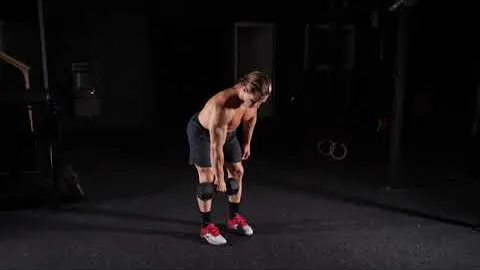
If you are looking to improve your overall strength and conditioning, the single arm dumbbell deadlift is an exercise you should consider incorporating into your fitness routine. This compound movement primarily targets your lower back, glutes, hamstrings, and core, offering a wide range of benefits for both beginners and advanced lifters.
Improved Strength: The single arm dumbbell deadlift is an excellent exercise for building strength in your posterior chain muscles, which include your lower back, glutes, and hamstrings. Strengthening these muscles can result in increased power and stability during other compound exercises, such as squats and deadlifts.
Enhanced Balance and Stability: Unlike traditional deadlift variations, the single arm dumbbell deadlift requires more balance and stability as it challenges your core to stabilize your body during the movement. This can help improve your overall balance and stability for everyday activities and other athletic endeavors.
Reduced Risk of Imbalances: Incorporating single-arm exercises into your routine can help reduce any imbalances between your dominant and non-dominant sides. By performing the single arm dumbbell deadlift, you can identify and correct any discrepancies in strength or stability, promoting better overall body symmetry.
Functional Strength: The single arm dumbbell deadlift closely mimics movement patterns that you commonly perform in daily life, such as lifting groceries, picking up objects, or even playing sports. By strengthening the muscles involved in these movements, you can improve your overall functionality and reduce the risk of injury.
Follow these step-by-step instructions to perform the single arm dumbbell deadlift correctly:
Setup: Stand with your feet shoulder-width apart, placing a dumbbell on the floor between your feet. Your knees should be slightly bent, and your core should be engaged for stability.
Grip: With your palm facing towards your body, bend down and grip the dumbbell with your non-dominant hand. Ensure a firm grip on the dumbbell, as it will prevent any unnecessary strain or slippage during the exercise.
Starting Position: Extend your non-dominant arm straight down, keeping your back flat and your chest up. Your dominant hand can be placed on your hip or extended out for balance.
Lifting Phase: Push through your heels, engage your glutes, and lift the dumbbell off the floor using your lower back and hamstrings. Keep your back straight and avoid any rounding or hunching.
Completion: Once you have reached a standing position, pause for a moment, then slowly lower the dumbbell back down to the floor, maintaining control throughout the movement. Repeat the exercise for the desired number of repetitions.
To ensure safety and effectiveness, keep the following tips in mind when performing the single arm dumbbell deadlift:
The single arm dumbbell deadlift is a versatile exercise that targets multiple muscle groups, making it an excellent addition to any strength training program. By incorporating this exercise into your routine, you can improve strength, stability, and functional fitness while reducing the risk of imbalances and injuries. Remember to prioritize safety and proper form to maximize the benefits of this exercise.
If you're looking for a gym, fitness club or yoga studio, you've come to the right place.
You can find information about gyms in your area. Browse catalog of gyms and find gyms with classes which are you looking for.
On gym page you can find simple information like address, phone or website. You can find list of available classes. You can check availability of personal training or small group classes. On place page you can also see information about open hours.
You can find gyms near you with amenities, courts, studios and equipments.
Use our map to find gym at your city or district.
In Gym Navigator you can find list of exercises with movies for many body parts.
You can browse exercises catalog and find exercises the best of you.
You can also find exercises grouped into workout plans, which you can use to improve you body. Each routine show you exercises one by one and give you possibility to count you progress and count down rest time.